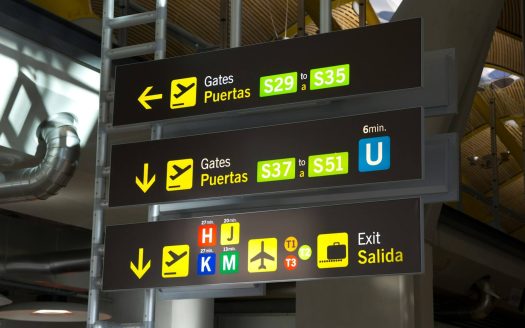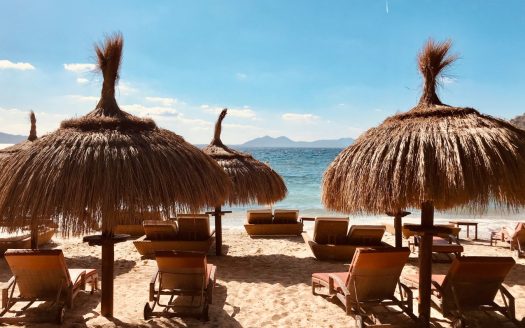Senda Litoral: Discover the Most Beautiful Coastal Route of Malaga
With its impressive 160-180 kilometers in length, the Senda Litoral represents one of the most ambitious coastal projects in Europe. This coastal route in southern Spain connects Manilva and Nerja through the entire province of Málaga, where visitors can enjoy more than 320 sunny days a year and a pleasant average temperature of 20 degrees Celsius.
Moreover, the Senda Litoral route, also known as the Senda Litoral Costa del Sol, is already about 80% accessible to hikers. With an investment of €30 million by the Diputación de Málaga, the trail is currently 73% complete, representing 114 functioning kilometers. This walking trail allows visitors to explore the beautiful coastline of Málaga, starting from the famous Balcón de Europa in Nerja to Punta Chullera on the provincial border with Cadiz. The project aims to promote tourism and sustainability by connecting municipalities and encouraging walking and cycling along the coast.
What is the Senda Litoral?

The Senda Litoral (Coastal Path) is a fascinating project initiated by the Provincial Council of Málaga in collaboration with various government agencies. The project aims to make the entire coastline of the Costa del Sol accessible to walkers and cyclists.
This ambitious initiative connects existing structures such as boardwalks, bike lanes and walkways with newly constructed sections. In fact, about 80% of the Málaga coastline is already passable through existing infrastructure. The remaining 20% is the focus of the current project, which is scheduled to be completed within a five-year period.
No fewer than 14 coastal municipalities are collaborating on this large-scale project, including Nerja, Torrox, Vélez-Málaga, Rincón de la Victoria, MARE, Torremolinos, Benalmádena, Fuengirola, Mijas, Marbella, San Pedro de Alcántara, Estepona, Casares and Manilva. Also involved are the Environment and Spatial Planning Department of the Andalusian government and the Ministry of Agriculture, Food and Environment for Coast and Sea.
The trail consists of different types of road surfaces – from urban beaches and boardwalks to wooden boardwalks across fragile coastal areas. Eventually, walkers will be able to enjoy boardwalks, cliffs, beaches, marinas and even the longest pedestrian bridge in Spain.
The Senda Litoral is closely linked to the“Gran Senda de Málaga” (GSM), a circular route throughout the province that has already become a national reference for active tourism. Especially for entrepreneurs in the tourism sector, this project offers new opportunities, as it is expected to generate an economic impact of more than €40 million and create about 400 jobs per year.
In addition, the route makes accessible important natural areas such as the Artola dunes, the Vélez delta, the mouth of the Guadalhorce and forty-two historic watchtowers along the Malaga coast.
Progress and status in 2025
By 2025, the ambitious Senda Litoral project has made significant progress, although challenges remain. According to the most recent figures, about 85-90% of the total route is now accessible to walkers and cyclists. This is marked progress from previous years, when as recently as 2017 it was reported that 80% was complete.
The financial investment in this project is substantial. Since 2016, a total of €12.1 million in grants has been provided to various municipalities to complete the trail, with an additional budget of €7 million set aside for the current year. The total cost has now reached approximately €21 million.
Estepona is showing leadership in the development of the project. Of the 22 kilometers of coastline in this municipality, 90-95% are now connected by the Senda Litoral. Mayor José María García Urbano has announced that the two remaining sections are expected to be completed before the end of 2025. There are also plans for the Senda Fluvial, which will connect the coastal corridor with the mountainous and rural area.
Other municipalities are also making progress. Casares is cited as “the first municipality to have its entire coastline connected through the Senda Litoral”. In Vélez-Málaga, a new section of almost a kilometer was recently opened, thanks to an investment of €1.3 million.
However, certain sections remain problematic. The connection between Nerja and Torrox, characterized by cliffs and narrow coves, is still challenging. Other hard-to-complete areas include east Estepona, west Benalmádena, and west Nerja.
An important recent development is the agreement between Málaga City and Rincón de la Victoria to complete the section between these two municipalities. This section is divided into three projects with a total value of about €2.8 million.
The president of the Málaga Provincial Authority, Francisco Salado, stressed the importance of this project as “essential for the province of Málaga” because it connects municipalities from a sustainability perspective while boosting tourism and revenue.
Nature, heritage and experience along the way
Along the Senda Litoral a rich combination of natural beauty and cultural heritage awaits explorers. The route winds through a variety of landscapes, including beaches, cliffs and protected natural areas. Particular natural attractions include the Dunes of Artola, the delta of the Río Vélez, the mouth of the Guadalhorce and the rocky section between Calahonda and Calaburras in Mijas.
In terms of cultural heritage, the coastline is dotted with no fewer than 42 historic watchtowers. These date from the Andalusian period, specifically from the reign of Yusuf I (14th century), who was responsible for fortifying much of the coast. These towers served as a warning system against pirate raids, using smoke signals during the day and fire signals at night. They functionally consist of two parts: a roof terrace and an inner chamber with a spiral staircase.
Hikers on the Senda Litoral also pass Phoenician ruins in Vélez-Málaga and charming fishing villages that reflect the region’s rich maritime history. From the famous Balcón de Europa in Nerja to the Castillo de la Duquesa in Manilva, the route connects 14 coastal towns, each with its own character.
The accessibility of the route varies, with parts classified as: inaccessible, convertible, usable, accessible or universally accessible. For people with mobility limitations, in some areas, such as Mijas, the use of an electric wheelchair or scooter is recommended.
The ideal time to experience the Senda Litoral experience is during spring (April to June) and fall (September to October), when the weather is pleasant and the landscape is in full bloom. Summers can be hot and winters sometimes bring rain, so plan your trip accordingly. The trail is designed to accommodate different fitness levels, with a mix of easy and moderate terrain suitable for experienced hikers as well as beginners and cyclists.
Conclusion Senda Litoral
The Senda Litoral of Málaga is undoubtedly an impressive project that brings the entire coastline of the Costa del Sol to life. With 85-90% of the route already accessible by 2025, this ambitious initiative has clearly taken shape. Not only does it physically connect fourteen coastal municipalities, but above all it creates a unique experience for walkers and cyclists who want to enjoy the Andalusian coastal landscape.
Although challenges remain, especially with hard-to-access areas such as the cliffs between Nerja and Torrox, municipalities such as Estepona and Casares show that completion is feasible. The significant investment of approximately €21 million reflects the importance local authorities attach to this project.
What makes the Senda Litoral truly special is its combination of natural splendor and cultural heritage. Along the route you will find both protected natural areas and historic watchtowers from the 14th century. In addition, the trail offers different types of terrain suitable for both experienced hikers and beginners.
In summary, the Senda Litoral is a textbook example of how tourism and sustainability can go hand in hand. By encouraging walking and cycling, the project contributes to eco-friendly tourism while strengthening the local economy. When visiting the Costa del Sol, it is therefore well worth exploring part of this particular coastal route – whether you enjoy the urban beaches and promenades or prefer to explore the rugged natural sections.
FAQs about Senda Litoral
Q1. How long is the Senda Litoral route? The Senda Litoral is an impressive coastal route about 160-180 kilometers long, stretching from Manilva to Nerja in the province of Málaga.
Q2. Which municipalities are involved in the Senda Litoral project? Fourteen coastal municipalities are involved in the project, including Nerja, Torrox, Vélez-Málaga, Rincón de la Victoria, Málaga, Torremolinos, Benalmádena, Fuengirola, Mijas, Marbella, San Pedro de Alcántara, Estepona, Casares and Manilva.
Q3. What kind of sights to expect along the Senda Litoral? Along the route you can enjoy beautiful beaches, cliffs, protected natural areas such as the Dunes of Artola, and cultural heritage including 42 historic watchtowers from the 14th century.
Q4. Is the Senda Litoral suitable for all hikers? The trail is designed to accommodate different fitness levels, with a mix of easy and moderate terrain. There are sections classified as universally accessible, but for some sections the use of an electric wheelchair or scooter is recommended for those with mobility limitations.
Q5. What is the best time to visit Senda Litoral? The ideal time to experience Senda Litoral is during spring (April to June) and fall (September to October), when the weather is pleasant and the landscape is in full bloom. Summers can be hot and winters sometimes bring rain, so it is advisable to plan your trip accordingly.














